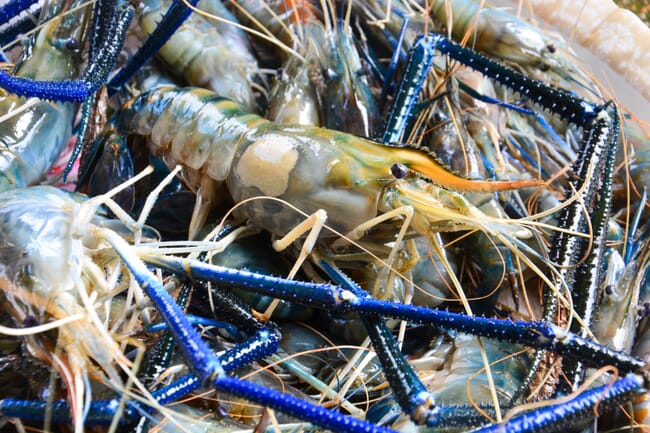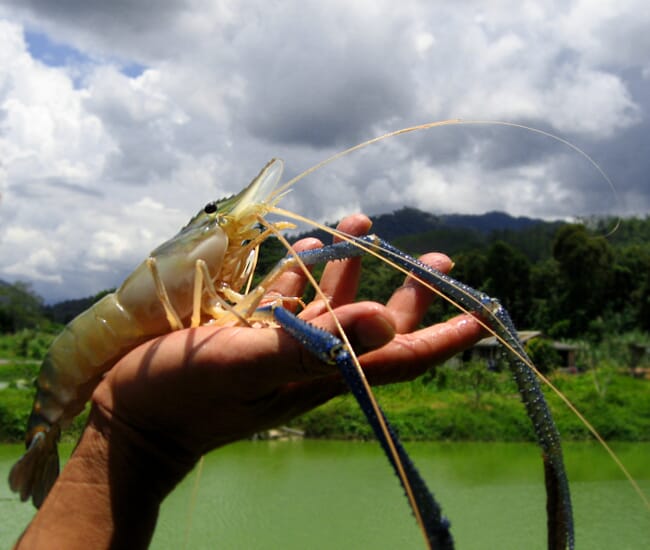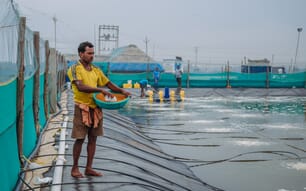
Giant river prawn aquaculture is increasing exponentially in the tropical and subtropical regions of the globe
Researchers from the Centre for Environment, Fisheries and Aquaculture Science (Cefas), Chulalongkorn University and the Asian Institute of Technology (AIT), have published a scientific review that focuses on pathogens in M. rosenbergii culture, identifying other hosts for the pathogens and outlining how farming practices can limit disease transfer. The team noted that since the last pathogen review in 2012, the number of characterised diseases has increased.
In the last 30 years the culture of the giant river prawn, Macrobrachium rosenbergii, has increased exponentially in the tropical and subtropical regions of the globe. Demand and consumption of giant river prawns has been rising across China, India, Bangladesh and Brazil. But the rise in production has been accompanied by disease pressures that undermine prawn performance, limit farm profits and the sector’s commercial potential. Prawn producers and researchers have also noted the emergence of new pathogens and viruses that are infecting broodstocks.
The trouble with viral pathogens
The researchers noted that the incidence of viral diseases in farmed river prawns is rising. This is especially challenging because the viruses do not appear to be host-specific – meaning that they can infect both freshwater and saltwater penaeid shrimp species. It also appears that the different hosts can transmit the viruses between species.

The incidence of viral diseases in farmed river prawns is rising © Eng Wah Khoo
The researchers created a table summarising the clinical and histopathological signs of the following viral infections:
- Covert mortality nodavirus (CMNV)
- Crustacean hepe-like virus 1 (CHEV)
- Decapod iridescent virus 1 (DIV1)
- Gill-associated virus (GAV)
- Hepatopancreatic parvovirus (HPV)
- Infectious hypodermic hematopoietic necrosis virus (IHHNV)
- White spot syndrome virus (WSSV), among others
Bacterial diseases, fungi and microsporidia that impact giant river prawns
M. rosenbergii are also susceptible to opportunistic bacterial infections that can cause a myriad of clinical signs and result in mortalities. Vibrio, Aeromonas and Pseudomonas spp. have been associated with shrimp mortalities in both hatcheries and grow-out ponds.

Fungi were the first pathogenic agents identified in M. rosenbergii aquaculture and have been present in river prawn ecosystems since the industry’s commercial expansion. Fungal agents tend to cause lower levels of mortality when compared to viral and bacterial infections, but can discolour the shrimp, lowering their commercial value. The researchers note yeast infections are common in winter months when water temperatures are cooler.
Microsporidian infections have been observed in giant river prawns but have not been taxonomically described until now. It appears that many of the pathogens that impact other shrimp species can infect giant river prawns. Many prawn producers are relying on antibiotic therapies to limit their farm losses.




